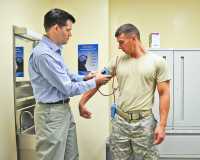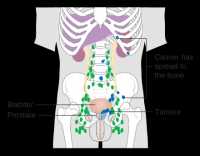Author Interviews, Weight Research / 16.11.2018
Gelesis100 Hydrogel In Development For Weight Loss and Obesity
MedicalResearch.com Interview with:
 H.M. Heshmati, M.D.
Executive Vice President, Endocrinology and Metabolism
Gelesis, Inc.
MedicalResearch.com: What is the background for this study? What are the main findings?
Response: The Gelesis Loss Of Weight (GLOW) clinical study is a pivotal, multicenter, double-blind, placebo-controlled study of our lead investigational product candidate, Gelesis100, which is an oral, non-systemic approach to weight loss. The GLOW study was designed to assess change in body weight in adults with overweight or obesity after six months of treatment with Gelesis100.
Main findings from the GLOW study include the following:
H.M. Heshmati, M.D.
Executive Vice President, Endocrinology and Metabolism
Gelesis, Inc.
MedicalResearch.com: What is the background for this study? What are the main findings?
Response: The Gelesis Loss Of Weight (GLOW) clinical study is a pivotal, multicenter, double-blind, placebo-controlled study of our lead investigational product candidate, Gelesis100, which is an oral, non-systemic approach to weight loss. The GLOW study was designed to assess change in body weight in adults with overweight or obesity after six months of treatment with Gelesis100.
Main findings from the GLOW study include the following:
 H.M. Heshmati, M.D.
Executive Vice President, Endocrinology and Metabolism
Gelesis, Inc.
MedicalResearch.com: What is the background for this study? What are the main findings?
Response: The Gelesis Loss Of Weight (GLOW) clinical study is a pivotal, multicenter, double-blind, placebo-controlled study of our lead investigational product candidate, Gelesis100, which is an oral, non-systemic approach to weight loss. The GLOW study was designed to assess change in body weight in adults with overweight or obesity after six months of treatment with Gelesis100.
Main findings from the GLOW study include the following:
H.M. Heshmati, M.D.
Executive Vice President, Endocrinology and Metabolism
Gelesis, Inc.
MedicalResearch.com: What is the background for this study? What are the main findings?
Response: The Gelesis Loss Of Weight (GLOW) clinical study is a pivotal, multicenter, double-blind, placebo-controlled study of our lead investigational product candidate, Gelesis100, which is an oral, non-systemic approach to weight loss. The GLOW study was designed to assess change in body weight in adults with overweight or obesity after six months of treatment with Gelesis100.
Main findings from the GLOW study include the following:
- 59% of Gelesis100-treated adults achieved weight loss of at least 5% over six months.
- Successful response to Gelesis100 may be predicted by elevated fasting plasma glucose at baseline or weight loss as early as week 8.
- There was a clear and early separation between responders and non-responders. More specifically, weight loss of at least 3% as early as after eight 8 weeks of treatment predicted clinically meaningful weight loss at six months, with sensitivity and specificity levels exceeding 80%.
- The study also showed that nearly half of the adults with prediabetes or drug-naive type 2 diabetes were super-responders. These individuals, who typically face greater challenges to lose weight, had six times greater odds of being super-responders, compared to placebo (adjusted OR: 6.1, P=0.0071).
- Gelesis100 had a highly favorable safety and tolerability profile.












 Cara Tannenbaum, MD, MSc
Director | Directrice
Canadian Deprescribing Network
MedicalResearch.com: What is the background for this study? What are the main findings?
Response: The D-Prescribe trial was driven by the need to show that seniors can cut down on their medication in a safe and effective manner. Pharmacists intervened in a proactive way to flag patients who were on potentially risky meds such as sleeping pills, NSAIDs and glyburide and to inform them of the risks, using an educational brochure. Pharmacists also communicated with their physician using an evidence-based pharmaceutical opinion to spark conversations about deprescribing. As a result, 43% of patients succeeded in discontinuing at least one medication over the next 6 months.
Cara Tannenbaum, MD, MSc
Director | Directrice
Canadian Deprescribing Network
MedicalResearch.com: What is the background for this study? What are the main findings?
Response: The D-Prescribe trial was driven by the need to show that seniors can cut down on their medication in a safe and effective manner. Pharmacists intervened in a proactive way to flag patients who were on potentially risky meds such as sleeping pills, NSAIDs and glyburide and to inform them of the risks, using an educational brochure. Pharmacists also communicated with their physician using an evidence-based pharmaceutical opinion to spark conversations about deprescribing. As a result, 43% of patients succeeded in discontinuing at least one medication over the next 6 months.

 Yingxi (Cimo) Chen, MD, MPH, PhD
Postdoctoral Fellow
Radiation Epidemiology Branch, DCEG, NCI, NIH
Rockville MD 20850
MedicalResearch.com: What is the background for this study?
Response: Death rates from drug overdose have more than doubled in the US in the 21st century. Similar increases in drug overdose deaths have been reported in other high-income countries but few studies have compared rates across countries.
Yingxi (Cimo) Chen, MD, MPH, PhD
Postdoctoral Fellow
Radiation Epidemiology Branch, DCEG, NCI, NIH
Rockville MD 20850
MedicalResearch.com: What is the background for this study?
Response: Death rates from drug overdose have more than doubled in the US in the 21st century. Similar increases in drug overdose deaths have been reported in other high-income countries but few studies have compared rates across countries. 














